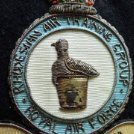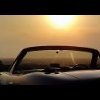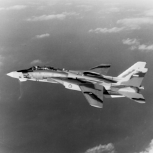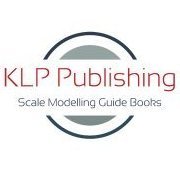All Activity
- Past hour
-
 denders reacted to a post in a topic:
Mals Way goes Maritime, Arado 196A-3
denders reacted to a post in a topic:
Mals Way goes Maritime, Arado 196A-3
-
 denders reacted to a post in a topic:
El Corsair Grande, Numero Quatro
denders reacted to a post in a topic:
El Corsair Grande, Numero Quatro
-
 Christa reacted to a post in a topic:
New Spitfire from Kotare
Christa reacted to a post in a topic:
New Spitfire from Kotare
-
Do you have at least a 1 second light off delay on your resin print settings? That can make a large difference in quality especially with flat vertical faces. Light off delay is a period of time between when the build plate comes back down to its print position and when the LCD activates to print the layer. Usually a setting in your slicer. There are a number of guides out there. I like this one best: https://ameralabs.com/blog/the-complete-resin-3d-printing-settings-guide-for-beginners/?srsltid=AfmBOorfoFGq5sdm-5kgaD78OP-YSKIFmQBAT8eYVWnq-6DzV1TqUBJ_
-
 MikeC reacted to a post in a topic:
New Spitfire from Kotare
MikeC reacted to a post in a topic:
New Spitfire from Kotare
-
 patricksparks reacted to a post in a topic:
El Corsair Grande, Numero Quatro
patricksparks reacted to a post in a topic:
El Corsair Grande, Numero Quatro
-
 patricksparks reacted to a post in a topic:
F-108 Rapier.....it's here.
patricksparks reacted to a post in a topic:
F-108 Rapier.....it's here.
-
 denders reacted to a post in a topic:
1/48 Eduard Spitfire Vb
denders reacted to a post in a topic:
1/48 Eduard Spitfire Vb
-
 Alain Gadbois reacted to a post in a topic:
1/48 Eduard Spitfire Vb
Alain Gadbois reacted to a post in a topic:
1/48 Eduard Spitfire Vb
-
 Alain Gadbois reacted to a post in a topic:
MPM 1/48 Fw 190S
Alain Gadbois reacted to a post in a topic:
MPM 1/48 Fw 190S
-
 patricksparks reacted to a post in a topic:
Das Werk 1/16 Leopard 2 A7V
patricksparks reacted to a post in a topic:
Das Werk 1/16 Leopard 2 A7V
-
You’d think the military services of Great Britain these days are a Monty Python screen play, altho Monty Python might be more believable in this case. Just because we in the US have been known to plow ahead with doggy combat airplanes from time to time does not mean other countries have to do the same. But then, who builds two fleet carriers using electronics supplied by Lucas and motors left over from Jensen Healey for billions that lack the ability to launch and recover anything other than helicopters. I have no idea who makes decisions for the Royal Navy but I think Jack Mawbry would have tossed him over the side, given the opportunity. If I remember correctly, during WW2 and even the Falklands dust-up, the RAF carried the day more often than the Royal Navy who, in the former, lost capital ships before the paint dried and then had to rely on container ships and small boys as combatants during the latter. And in these days of hypersonics, effective drones, very accurate medium ranged missiles, local terrorists and all the other stuff we’ve come up with lately, why does anyone need a single seat nuke lorry other than to give good folks like us something else to build? It fair boggles the brain.
-
dennismcc started following Happy birthday Wolf!
-
Happy birthday and best wishes for a fun day. Cheers Dennis
- Today
-
That was a great book by James Clavell, huge number of pages but read it a least a couple of times.
-
That's a great idea. (Or any glass nosed Mosquito for that matter )
-
HK Models Do-335A-12 at Oberpfaffenhofen
FW190A-5 replied to jeroenpeters's topic in Ready for Inspection
That's impressive! -
Shogun made me buy one, watching that video post pushed me over the edge. I hope they release some of the later ones, such interesting planes. I have never modeled a photo recon aircraft but this looks irresistible.
-
Oh boy, oh boy. I don't understand why I am so excited about this, but pre-order done. Can't wait, want it now, now, now, NOW.
-
Thanks. A bit of a squeeze even with 5" focal length camera lenses. Intrigued that Kōtare plan, eventually, on doing all the key PR Spitfires. Will certainly be in for a couple. And a PR Mossie if they ever do one, without engines. The HKM just looks odder every time I see it, and the Revell is just too ancient. Tony
-
Great work all around and especially the canopy pull. Thanks for documenting that. Looking forward to what's next! (edit.. I see the Navy B-25 on the bench! Nice!)
-
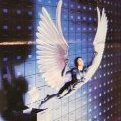
1/32 AD-5/A-1E Skyraider, TTModelworks
thierry laurent replied to waltmert's topic in LSP Discussion
Actually it is not that easy to release USAF SEA scheme decal sets for such Skyraider marks. There are far less pictures than for the single seaters. There were far less nose arts and it is very difficult to find different views of the same airframe. I realized that when I did the research work for the Zotz sets. -
@Wolf Buddee Your Tamiya Spitfire is one of my favourite ever builds!
-
And Malcolm is on the Kotare team a very knowledgeable guy behind Ventura - another company with great products
-
The Youtube video I posted earlier goes into that too!
-
I was trying to convey that in my experience, all Trumpeter kits share the same challenge, that none of the panels meant to be open, will fit when assembled closed. It was meant as a general observation and nothing personal towards your build.
-
2025 Edition - Bargain kits (or kits that hit above their weight)
Phantom2 replied to geoawelch's topic in General Discussion
Yes, you can find Hasegawa, New ICM, Old Matchbox, New Special Hobby and Even Older Monogram kits in new, shiny Revell-boxes. That´s why I´ll recommend to check the kits on Scalemates! https://www.scalemates.com/ Otherwise, they are as a box with chocolates(?), You´ll never know what you get in a Revell-box... I have found out the hard way.... Stefan -

HK Models Do-335A-12 at Oberpfaffenhofen
alaninaustria replied to jeroenpeters's topic in Ready for Inspection
Magnificent work! I just noticed that the two hatches just ahead of the windscreen are reversed - they should be turned so that they match the opening contour. Other then that, great work!! Cheers Alan -
thanx guys!
-
2025 Edition - Bargain kits (or kits that hit above their weight)
MikeC replied to geoawelch's topic in General Discussion
Revell have also reboxed some of the ICM kits, one that springs to mind is the Tiger Moth. This can get somewhat confusing, as Revell have also, in the past, reboxed the venerable old Matchbox Tiggie. -
"...Supermarine's designers refused to have cameras or fuel tanks installed in the fuselage behind the cockpit. They feared this would shift the centre of gravity too far aft. So, in these two Spitfires [ie the two PR As], the modifications were limited to installing an F.24 camera with 5" focal length lens, in each wing, replacing the inner machine guns. The cameras were fitted almost vertically, with a slight outward bias to cover a wider area in a single run. [my bold] The fields of view of the cameras overlapped only slightly." P5 of Merlin PR Spitfires, Wojtek Matusiak, Ventura publications. The 5" F.24 is pictured on P25 of the companion volume, Merlin PR Spitfires in detail , Malcolm Laird and Wojtek Matusiak, Ventura publications, and on P38 a photo and diagrams of the installation.
-
John, I truly don´t mean this in a condescending way, but why are you so hung-up on those decals? There are a myriad of 1/32 AD-6 / A-1H decals available. If you really want an A-1E that much you can buy AD-6 decals an construct the plane you envision from there? Or is it a very exotic one you want?
-
Still trying to get my head around the camera fit. Two, one in each wing. Assuming no room for a vertical fit, did these cameras lay along the gun troughs and use a mirror to look through 90⁰ ? Presumably rotated or toed-in a bit to provide stereoscopic overlap ? Interesting. Tony
-
Fantastic build, Dariusz! And now the subject of this week's banner image on our Facebook page: https://www.facebook.com/largescaleplanes Kev
-
2025 Edition - Bargain kits (or kits that hit above their weight)
Phantom2 replied to geoawelch's topic in General Discussion
All of the ICM kits are wonderful, fit very well and are resonable priced. Hasegawa´s line of newer kits (-80´s and 90´s vintage) are really good and well detailed, very good fit and fun builds, but they are quite basic and the decals are so-so, check Scalemates! Revells newer kits (Spitfire Mk.IX, Hurricane, Fw190A-8, Me 262, Bf109G-6/10 & G-2/4, BaE Hawk) are all quite good kits, but check Scalemates first. In many Revell boxes you can find old Hasegawa kits (no bad thing at all in fact), once again, check Scalemates! The newer Special Hobby kits are what I call "short-run light", compareble to -90´s Airfix, no location pins but fit and detail are very good, good decals. Trumpeter/Hobbyboss are generally good kits, good fit and well detailed, and accuracy might vary, decals are usable but so-so. PCM/Azur/Infinity/Fly and Older Special Hobby kits are "pure" short-run, usually pretty good fit but these kits can or will demand work and some modelling skills. But even if they are more work, they are very, very rewarding builds! Stefan -

Anyone used "EMP3D" parts? Looking at Corsair Hellcat wheels
thierry laurent replied to jeroen_R90S's topic in LSP Discussion
And I forgot: I also received various free goodies!


